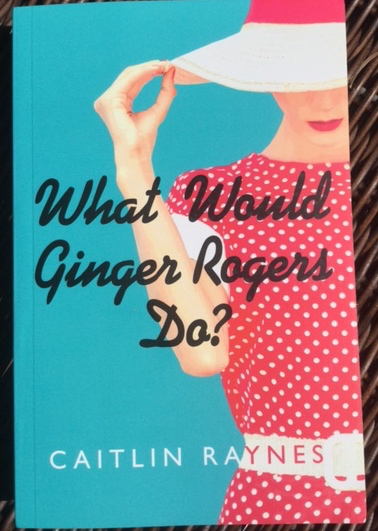Beach Reads and Other Sins

Guilt Free Reads
Graduate school is the incubator of snobbery, particularly in the arts. In graduate school I had professors who spoke of “lit-retch-ure” in a way that kicked sand in the face of anyone not certifiably gaga for Derrida. To indulge in a Beach Read—any work by a popular author (even a once-popular author, like the 19th century Mary Braddon)—cast you, the reader, immediately out of the rarified elite, and down into the company of the dormouse. When the Red Wheelbarrow Writers Book Club chose Beach Reads for August, I—clearly still suffering grad school hangover—added the tag, “guilty pleasures:” the books you didn’t like to admit you enjoyed. Little literary sins.
The Red Wheelbarrow Writers mercifully do not suffer from these sorts of literary sins. Quite to the contrary these writers brought to the August Book Club Beach Reads a vast array of possibility and expression. Indeed, as working writers they all agreed that they didn’t feel guilty about any time they spent reading. No matter what. Jes Stone said for guilty pleasure she watched old British comedies on Hulu, snuggled with her cat.
Janet Oakley, a historical novelist, loves the great, thick tomes of M. M. Kaye (Shadows of the Moon) and Diana Gabaldon (the Outlander series). She also loved Robert Ludlum’s Bourne Identity and Benchley’s Jaws, perhaps the best summer book ever written.
Beach Reads equate with escapist pleasure and for Victoria Doerper, Donna Leon’s mysteries set in Venice offered her just that. Victoria read all of the twenty-five books in the series in one summer as an antidote to an ongoing health crisis in the family. Waiting for the next Donna Leon, Victoria picked up Jennifer Chiavernini’s historical novel The Quilters’ Apprentice, stories about characters and relationships and an art she knew nothing about. Now she does.
Sean Dwyer also relished a beach read series for what he could learn from them. Cemetery Dance is one of ten books by dual authors, Douglas Preston and Lincoln Child. Set in New Orleans these mystery-thrillers are addictive, meticulously researched and the reader comes away both informed and entertained. Frances Howard-Snyder indulged regularly in the Elizabeth George novels, and more recently the charming best seller The Guernsey Literary and Potato Peel Pie Club set in the Channel Islands during the Occupation.
Pam Helberg has also freed herself from guilt which is a good thing for a person in a masters program for clinical mental health counseling. Her list was the most eclectic of all, from the most recent Pam Houston, Contents May Have Shifted to Mary Doria Russell’s sci fi, The Sparrow about Jesuits in space. Yes, you read correctly. Pam’s Beach Reads included a find like The Essential Rumi, a poet from ancient Persia and work by Kay Jamison, a writer who has explored madness and creativity and then, more personally, in The Unquiet Mind described her own bout with mental illness. Mental illness also figured in Ellen Forney’s graphic novel Marbles
Susan Chase-Foster in her well-traveled way, brought in books that she had read on beaches far and near. She read The Prince of Tides (and loved it) on Cape Breton in Nova Scotia, and a Robert James Waller volume, Puerto Vallarta Squeeze read, naturally, on the beach at Puerto Vallarta. Again, in Mexico she read Frieda Kahlo’s diaries, an absolutely beautiful book that reproduces in full color Kahlo’s diaries and doodles, illustrated meanderings. Susan read Anthony Doerr’s Shell Collector (collection of stories) on a recent beach, and my own Steps and Exes on a beach here in the Puget Sound. Steps is set on the fictional Isadora Island. For her upcoming trip to Alaska, Susan is taking Welcome to the Goddamn Ice Cube, Adventures in Norway and Alaska, and promised to tell us about it on her return.
Hearing these evocative descriptions of so many books, I felt relieved of years of guilt for having loved the work of Daphne Du Maurier! Du Maurier, an English writer, had a long rich (in every way) career, beginning in the Thirties with the best seller Rebecca, and ending in 1968 with The House on the Strand, about time travel and LSD. I have read The Godfather many times, not because it is a great book, it’s not, but there is a narrative energy implicit in its pages that defies Derrida.
Though the Pickford Film Center lobby is not quite the confessional, still I offered up the greatest guilty pleasure of all: I had written a Beach Read. What Would Ginger Rogers Do, a light, literary confection, published last year in the UK by Buried River Press, an imprint of Robert Hale Ltd. Even the dust jacket, a feminine figure in a summer dress wearing a big hat (see above) all but shouts: Beach Read! Rom-Com! Get Out the White Wine!
Ironically, the story itself is about a bookish conflict, the mega-selling romances of an established middle aged writer, versus a gloomy-grim literary novel of rehab and suicide. The central character, Tosca Tonnino oversees Author Events at Carter &Co., a fictional bookshop in Friday Harbor. A new hire comes to the bookshop under mysterious circumstances. Ethan James, an East Coast import from a wealthy family, is attractive, secretive, sometimes surly, often blunt, occasionally witty, and fiercely competitive. Tosca finds him generally annoying until one snowy night when, thrown unexpectedly together, their romance blossoms. However, next day, Ethan makes clear, it was only a one night stand. Not long after, Tosca snags a terrific professional coup. Lucy Lamont—author of the mega-best-selling series of saccharine Shannonville novels—invites herself to do a reading at Carter &Co, June 12th. Tosca’s boss and colleagues are thrilled, but her glory is cut short. Ethan announces that his old school friend, Win Jefferies, author of Body Electric, a bleak literary bestseller, wants to come there too. June 12th. These two towering egotistical writers on the same stage? Unthinkable! The day of reckoning approaches.
Though Ginger Rogers is an eclair of a novel, I did not toss it off in a few months. On the contrary, I worked on it off and on for ten years, trying out in different forms, story, novella, novel, back to novella, return to novel. Moreover I have vast affection for it. I published it as Caitlin Raynes since the first person narrator, Tosca, is a woman about thirty; I thought my own name would undercut the narrator.
Of my three books with Robert Hale Ltd. What Would Ginger Rogers Do is the only one available in the States. Distributed, rather than published, it has languished. It needs a beach. The pages beg to be stained with SPF 50. I recommend it.



